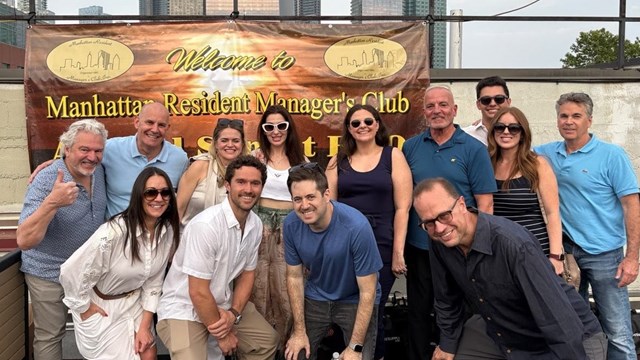
When people think of New York City, they tend to think of things like Times Square, The Empire State Building, and Broadway—sparkly icons of the Big Apple. What most people don’t think of when they think of the city is green spaces. Sure, there’s Central Park and a few smaller parks scattered throughout the boroughs, but overall, it’s a concrete jungle out there.
But within the Office of the Mayor, there is one organization that is working to change that, and is committed to making sure that we not only maintain and increase the green spaces we have, but that we incorporate environmental awareness into other aspects of city life. The Council on the Environment of New York City (CENYC) promotes environmental awareness and solutions to environmental problems.
A Little History
Founded in 1970, the CENYC is a privately funded citizens’ organization focusing on open space greening, greenmarket and new farmers development projects, environmental education, and other special projects with the aim of making a positive impact in the lives and communities of New Yorkers.
Operating with the help of an army of volunteers, CENYC employs just 28 full-time staff and is supplemented with part-time staff and consultants. The city provides the office space and a small budget for mailings—which means that the lion’s share of the group’s budget is funded by grants and individual, corporate and foundation donations.
Given these constraints, the CENYC manages large-scale projects on a small budget. Besides providing education to the masses in the five boroughs, the CENYC has almost single-handedly brought agriculture to the city.
The Greenmarket Movement
With over 45 locations in the five boroughs, greenmarkets—or farmer’s markets, as many know them—provide residents with fresh and sometimes hard-to-find fruits and vegetables at very affordable prices. Celebrating their 30th anniversary this year, the farmer’s markets are more popular than ever and still growing.
While many New Yorkers would sorely miss their weekly opportunity to browse through stalls selling freshly-baked pies, organic produce, and other delicacies, most people don’t know the story of how and why these markets came into being—and that may be the one reason more New Yorkers don’t know more about the CENYC.
“Given the amount of press the greenmarkets get,” says environmental psychologist Arline Bronzaft, PhD and four-term CENYC board member, “we still must remind people that this program is run by the CENYC.” All costs associated with the program are absorbed by the CENYC. However, farmers do pay a small fee to sell at the greenmarkets. Assisted in part by the largest number of staff within major programs CENYC has to offer, Bronzaft says “we are not only providing people with fresh produce, we are also educating New Yorkers on healthy eating habits.”
And the greenmarkets have more upsides as well. According the CENYC website, unsold produce goes to feed the hungry. In 2005 alone, participating farmers and bakers donated over 300,000 pounds of food to City Harvest, an organization that gathers unused food for redistribution among the needy. For New York City this is one program that provides a win-win situation to all parties involved.
Unlikely Gardens
Another CENYC innovation—the Open Space Greening program—is one that can’t help but become more high profile the longer it exists.
“With this program, we assist communities in what we call ‘Plant-A-Lot Assisted Gardening,’” says Bronzaft. Various communities around the five boroughs will approach the CENYC with the desire—or outright need—for an open space to cultivate into a garden or mini-park. “It helps New Yorkers get their hands dirty,” Bronzaft adds.
A generous donation provided by one of CENYC’s board members helps to sustain this program, which not only helps to beautify otherwise forgotten lots or areas in communities throughout the city, but provides children with a way of getting a bit closer to nature.
“We have created these spaces in areas of East Harlem, Stuyvesant, Clinton, Staten Island, Brooklyn and many more,” says Bronzaft. Manhattan residents need only visit these one of the gardens to appreciate the contribution the CENYC makes to the literal cultivation of New York City’s under-utilized spaces. Often maintained in working-class or lower-income neighborhoods, these gardens serve as diamonds in the rough, providing shade, shield from traffic noise and a quite place for children to play amid busy New York streets.
And more green spaces may be on the way. Thanks to a new feature on the “NYC Garden Mapping Project” interactive website, the public can now search for locations, which have the potential to be “greened.” The purpose of the site is to help communities, urban planners, community boards and aspiring urban gardeners make informed decisions about the use of open space in their neighborhoods. For information on how you can bring one of these spaces to an area in your community, call 212-788-7923 or email conyc@cenyc.org.
Little Green Kids
Through its environmental education programs, the CENYC effectively assists in shaping the way young New Yorkers view the city they call home. By going into the classroom setting on all levels, “These programs train students to get involved in various environmental areas, such as water quality and noise pollution, asthma triggers and more,” says Bronzaft.
Bronzaft stresses that the organization’s programming for kids doesn’t necessarily require the kids in question to be budding environmental engineers or preservationists. Any student, regardless of education track, can get involved as long as there is an interest. The ways for students to get involved with CENYC’s programming is limited only by the students’ imaginations. For example, one group of students took noise level readings in an area where an elevated MTA train ran frequently. Students then invited MTA representatives into their classroom to see exactly how elevated noise levels can affect a community, and challenged the organization to work on ways to resolve the issue of noise pollution.
Letter writing and public speaking are other ways students are being prepared for assisting in the fight for a healthy environment. Educational brochures packed with facts about the environment are also available through the CENYC as well.
CENYC in Action
Bronzaft has also gotten involved on a personal level, thanks to her experience and knowledge about noise pollution and its effects in the crowded, multi-family landscape of the city. Her credentials, coupled with the CENYC letterhead, seem to prove very effective tools in resolving residential noise complaints.
“The council has really allowed me to get involved with the communities—I have a very good track record with regard to getting residents of co-ops, condos and apartments some peace and quiet,” says Bronzaft. When an individual has gone through the normal avenues of calling 311, the police and/or the EPA about a noise complaint, if the issue is not resolved they may contact the CENYC to see if help may be found there.
The board of the CENYC meets several times a year, but the directors of the individual program committees meet as regularly as once per month. This is where goals are set and new program ideas are born. The program directors will then bring ideas to the board for discussion and approval.
“We also invite various commissioners to attend our board meetings and speak to what is going within the various environmental sectors,” says Bronzaft. “We may then develop strategies for assisting in these problems.”
This is no small task considering that through all of this, board members, volunteers and staff are faced with the constant struggle of how to raise money to fund these new programs, and to keep the CENYC up and running.
There are many ways to get involved with the CENYC, but for those who want hands-on, instant gratification, the Open Space Greening projects are where it’s at. A byproduct of volunteering for the council is that it is educational for adults as well.
As New York strives to become the “green apple” and stand at the forefront of sustainable urban development and quality of life, more and more city residents are taking part in and benefiting from programs such as the ones run by the CENYC. Whether you’re armed with a checkbook, a shovel, a stack of flyers, or a pot of marigolds, a great place to start is with the CENYC. As Bronzaft says, “We really are growing and our educational programs are outstanding.” For complete information on how you can help, visit www.cenyc.org.
David Garry is a freelance writer living in New York City.





Comments
Leave a Comment